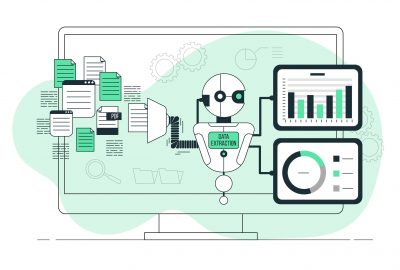- Improved Customer Experience
- Speed of Execution
- Future-Proofing your business
- Collaborate seamlessly and remotely
- Cut costs (operational and overhead)
Introduction: Which way post COVID-19?
We’re 8 months into 2020 and the majority of the world’s businesses would prefer to hit that ‘imaginary’ reset button. The current realities of the business world even though we’re just in July is causing most people and businesses to agree that it’s been a rather long year already. Some reports have claimed that over 21 million jobs in the US created all through the last decade have all been wiped out in March and April 2020 all due to the novel Corona Virus— COVID 19.
More than ever, the idea of digitalization and automation has now been pushed to the fore in global business discourse as it gradually becomes evident that even though it may seem that the worst of the global pandemic is over, its effects on the global business landscape may be more permanent than we are all willing to admit right now. If we’re all being honest with ourselves however, we’ll all admit that no one person can assuredly claim to know what the future of business will look like post-COVID-19. All we can work with right now are patterns and the most probable scenarios.
While companies like Twitter are towing the lines of WFH (Work From Home); the likes of Apple are hoping its employees would return to the office soon. Whatever the case may be, the patterns indicate that the most successful companies post COVID-19 will be those that that can operate with minimal costs (i.e both operational and overhead); provide the best customer experience; collaborate seamlessly and where needed, remotely; execute fast (which can either be in terms of resolving customer issues or going to market with a new product or service).
Irrespective of whatever model you choose to go for (Twitter or Apple), digitalization and automation of your core business processes are your organization’s best bet at not only survival but also thriving.
So what does it mean to Digitalize and Automate Core Business Processes?
To avoid any definition ambiguities, an attempt would be made to give a very brief overview of what Business process digitalization is and then we’ll attempt to do the same for what Business process automation is. Even though both terms are used interchangeably by some, it should be noted that they are different.
In B. Wall et al (2007), Business process digitalization also termed “eBusiness” was conceptualized by IBM in terms of the benefits that can be achieved by putting key business processes online. In their view, the key to becoming an eBusiness is putting ‘all core business processes (especially all processes that require a dynamic and interactive flow of information)’ online ‘to improve service, cut costs and sell products’. What business process digitalization speaks about is moving all core business processes of business online as against having them on paper.
On the other hand, Business Process Automation speaks largely of the use of technology as a means of automating recurring business processes through the use of software & different app integrations. Meaning, instead of having your employees do menial & simple tasks, you just let the software take care of it.
The nexus: Digitalize to Automate
It is safe to say that while Business Process Digitization focuses largely on moving core business processes online, Business process automation largely focuses on productivity gains, reliability and cutting cost. So, the real question now is: Why should businesses digitalize and automate?
Benefits of Digitalization and Automation
- Increased speed of execution/ Time saving: Digitalization and automation provides businesses with greater speed of execution. With fast project or product execution comes a reduction in the average turn around time for acquiring more business; hence saving time. When products or projects are being implemented as quickly as possible, it reduces the overall time to market for organizations whose income comes from the sale of those products. The faster an organization can complete the project’s execution and product delivery cycle, the faster it is for them to complete another project or build another product. Digitalization and automation do this by breaking down the perceived and real boundaries to team collaboration and resource management.
2. Collaborate seamlessly, remotely: This is particularly important especially based on our current realities. The novel coronavirus— COVID-19, has put a strain on human interactions all over the world. By digitalizing and automating your key business processes, your people which are your business’s most important resource are no longer bound to only operate within the geographical contiguity of an “office building”. Work becomes decentralized and efficient and members of teams can collaborate, share, seek reviews and achieve more from anywhere they are all the while ensuring that they are not exposed to scenarios that may expose them to the possibilities of contracting the virus.
3. Cost Cutting: One of the proven advantages of digitalizing and automating business processes is that it drives down both operational and overhead costs of doing business. It does this by ensuring that many of the attendant costs that arise from “simply choosing to be operational” are cut down. A case in point would be paper and its attendant ecosystem of related expenses which are considered to be operational expenses. For businesses whose operations are documents driven or paper-intensive, this means that if we were to draw a parallel line between an extra unit increase in customer acquisition, there would also be an increase in the papers used in processing or delivering the business’s promise to that customer.
This is literarily the case for businesses like this. Now also consider how this unit increase in paper consumption will also lead to an increase in the number of printers that would be needed, the ink for those printers, the files for filling those documents, the cabinets that would hold each file e.t.c. To think that we have only discussed just paper! If the costs of paper are calculated for some organizations, they would realize they could have found better ways to use such money for improved operational performance. The responsible behaviour for any business today would be to find new ways to ensure that business operations are not negatively affecting the environment.
4. Business Activity Monitoring: Digitalization and automation empower the leaders of an organization to make better and more informed decisions about their business. When an organization digitalizes and automates its core business processes, the leadership has access to dashboards that provide the decision-makers with valuable statistics, metrics, and insight which shed light on how the business is currently being run. It provides a platform for making decisions about discovered bottle-necks, business process re-engineering opportunities, and other metrics that may important to that business.
5. Improved customer experience: When businesses digitalize, it provides customers with more options when it comes to channels of interactions and communication with the business. This makes it easier for customers to raise their concerns, get solutions, share feedback with the business. Also when businesses move from just digitalization to automation, especially in the areas of manual, repetitive tasks, it gives employees more time to focus on the business’s customers.
I always say to the business owners who I come in contact with, “your competition is not local. Your competitors are in cities like Berlin, Frankfurt, New York, and the likes. They are already doing what I’m telling you to do now”. Even though many factors contribute to business survival, a solution that improves your chances of success and survival is a must-have.If you’re currently at the point where your business is considering starting its digital transformation journey, you can always reach to my team at dipoleDIAMOND. I’m also open to one-on-conversations on intelligent process automation. Don’t be a stranger.
Happy digitization!





